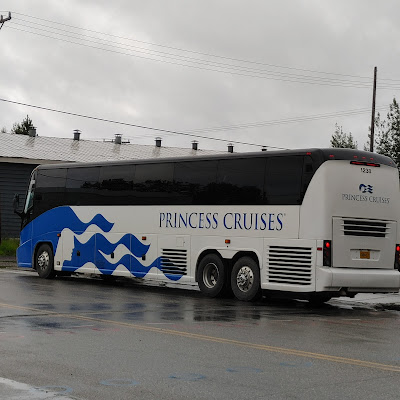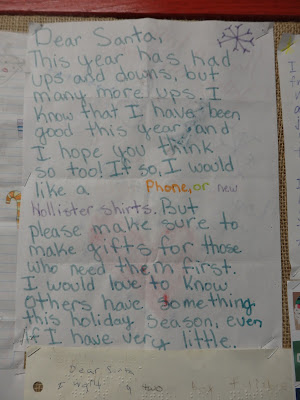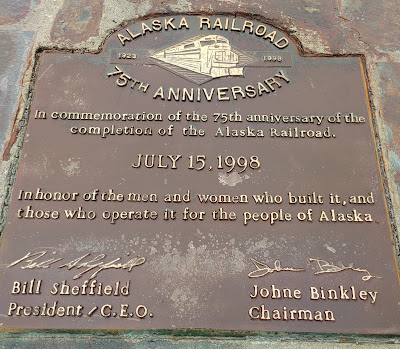 |
| Our only stop is in Nenana which is known for a few things. First is the railroad bridge across the Nenana River. |
 |
| The above plaque and this model are located in the middle of town. |
 |
| Yep, there's so little traffic that I could stand in the middle of the road to take photos. This is the old depot station, now a museum. |
 |
| There's a few railroad commemorative plaques on the east side of the depot. |
 |
| What do you want to bet that base is a train part? |
 |
| St Mark's Episcopal Church |
 |
| The railroad bridge |
 |
| View of the depot from where the ice classic equipment is on display. Behind it you can see a portion of the highway bridge. |
 |
| This was our bus for the day. Carnival Cruise Lines own Princess and Holland America so we were often in Princess buses. |
 |
| Nenana Ice Classic book in store. |
 |
| What??!! Did I read that right? |
 |
| Unbelievable!!! A guy must have named this establishment. |
 |
| Alaska has some oil refineries and fuel prices there aren't much different than what we see at home. |
 |
| It was time for lunch by the time we arrived in Fairbanks, so we were provided with a fried fish lunch at the Silver Gulch. There were at least four busloads of people there. |
 |
| One of the other buses. |
 |
| Flowers planted in a gold dredge bucket. More on that in the next post. |
 |
| After lunch we went to the city of North Pole. |
 |
| All the light poles in town looked like candy canes and even the McDonald's sign pole was done with that paint theme. |
 |
| Next stop - Santa Claus House. Now this is just a big gift shop but there were some outdoor sights. |
 |
| Of course, the candy cane paint theme continued. |
 |
| Of course there is a big Santa Claus also. He's 42 foot tall and weighs 900 pounds. |
 |
| The parking lot next door was being redone. More candy cane theme. |
 |
| There were also some reindeer next door. |
 |
| One of the services provided at Santa Claus House are letters from Santa. For a price, they will send a personalized letter "from Santa" to the child of your choice. |


























No comments:
Post a Comment